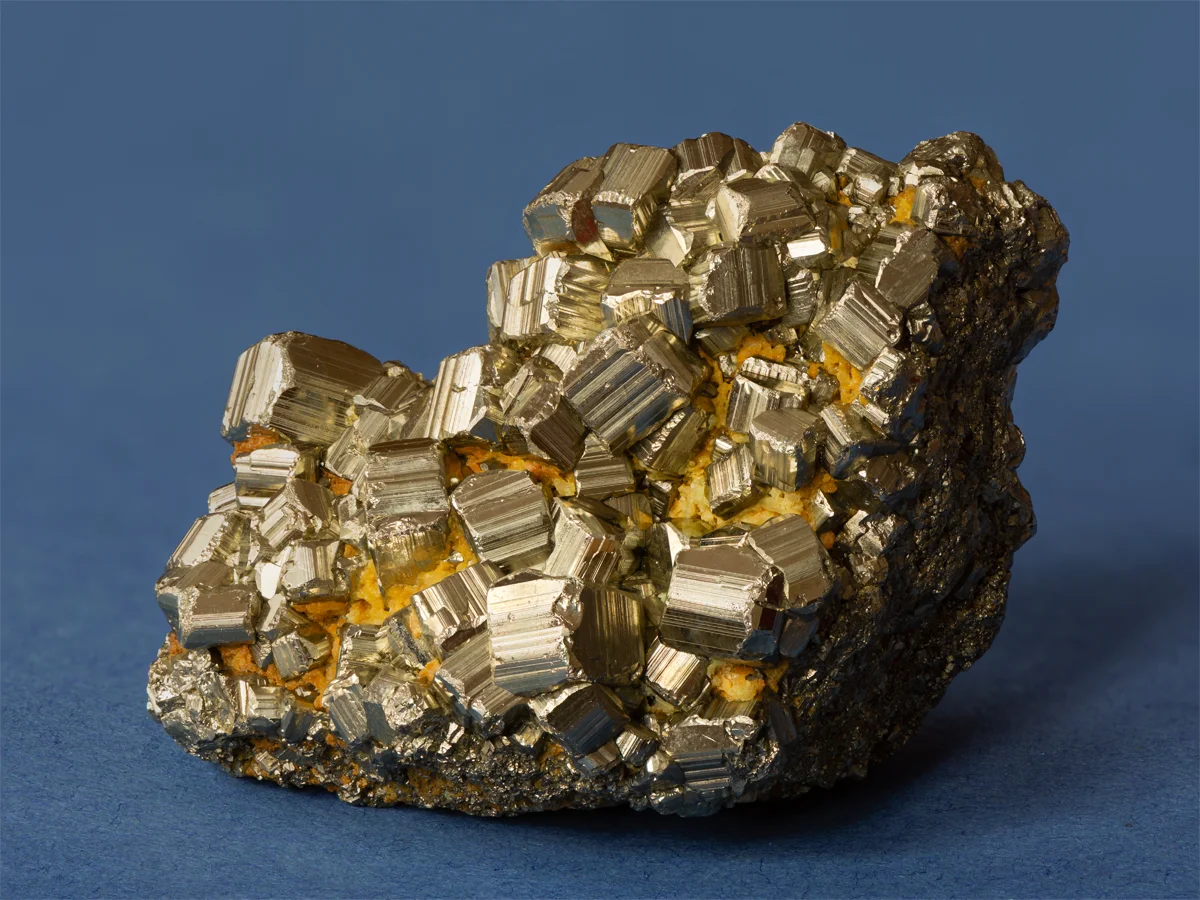Properties of Pyrite
Pyrite is a sulfide mineral composed of iron and sulfur, and it is commonly known as “fool’s gold” due to its metallic luster and a color that can resemble gold. It is commonly found in a variety of geological settings, including sedimentary rocks, metamorphic rocks, and hydrothermal veins.

The following table provides a comprehensive list of pyrite properties in both SI and US customary/Imperial units at normal temperature and pressure (NTP).
Note: click on the button to switch between Metric and Imperial units.
| Physical Properties | Metric |
|---|---|
| Chemical Formula | FeS2 |
| Molar Mass | 119.979 g/mol |
| Crystal System | Cubic |
| Density | 4950 - 5030 kg/m3 |
| Color | Pale brass yellow |
| Diaphaneity | Opaque |
| Luster | Metallic |
| Cleavage | {100} poor, {110} poor |
| Fracture | Conchoidal |
| Streak | Greenish black |
| Mechanical Properties | Metric |
| Mohs Hardness | 6 - 6.5 |
| Bulk Modulus | 149 GPa |
| Thermal Properties | Metric |
| Coefficient of Thermal Expansion (αL) | 2.6×10-5 1/°C |
Note: unless stated otherwise, all values are taken at room temperature (approximately 20°C or 68°F) and 1 atm pressure. (1 atm = 101,325 Pa)
References: 1) Cardarelli, François. Materials Handbook: A Concise Desktop Reference. Switzerland: Springer International Publishing, 2018. 2) CRC Handbook of Chemistry and Physics, 97th Edition. United Kingdom: CRC Press, 2016-2017.
